- OC Wally Cento
- 84 Mini Maxi
- IMOCA Open 60
- Consultancy Services
- 30m Blue Water Cruiser
- 25m Explorer Yacht
- 24m Fast Cruising Catamaran
- 23m Performance Cruiser
- 20m Explorer Yacht
- 20m High Performance Cruiser
- 18m Blue Water Cruiser
- 15m Performance Cruiser
- 15m Explorer Yacht
- 12m Explorer Yacht
- Multihull Design
- 18m Explorer Yacht
- 40m Blue Water Cruiser
- 40m Cruiser Racer
- 33m Performance Cruiser
- 30m Wally Cento
- 24m ORCsy Racer Cruiser
- 24m Day Sailer
- Carbon Component Design
- Yacht Performance Development
- CFD and Model Testing
- Twin Rudder Steering Systems
- Custom Deck Hardware
- Modifications and Refit
- VPP Routing and Sail Analysis
- Classic Yacht Refit & Optimisation
- Naval Architecture
- Engineering
- Rudder Design
- Brokerage Services
- 'Seahorse Magazine' #192
- 'Divoc' #190
- Lucent #180
- Influence #171
- 'Eora' #169
- 'The Three Brothers' #168
- 'Edenred' #165
- 'BHB3' #163
- 'Teata' #148
- 'Kite' #144
- ‘Sensei’ #131
- 'Gryphon' #106
- 'Horizon' #104
- 'Sabre II' #93
- 'Letto Di Pletto' #47
- 'Mowgli' #41
- 'Graybeard' #39
- 23.8m Ultime Trimaran
- 20.7m Orma Trimaran
- 18.28m Orma Trimaran
- 16.75m Cruising Catamaran
- 16.1m Cruising Catamaran
- 12.8m Crowther Shockwave Catamaran
- 9.1m Seacart 30 Trimaran
- 26.3m Aluminium Sloop
- 22.38m Aluminium Classic Yacht
- 21.0m Steel Schooner
- 21.0m Aluminium Cruising Ketch
- 20.0m Aluminium Explorer Yacht
- 20.0m Luca Brenta Racer Cruiser
- 19.6m Aluminium Bluewater Cruiser
- 19.2m Aluminium Lifting Keel Sloop
- 18.8m Custom Steel Sloop
- 16.0m Sly Cruiser Racer
- 14.5m Aluminium Cruising yacht
- 13.87m Wooden Motor Sailer
- 25.25m Reichel Pugh Maxi
- 18.28m IMOCA 60 Nexans WeWise
- 18.28m IMOCA 60 'Canada Ocean Racing'
- 18.28m IMOCA 60 Gentoo
- 18.28m IMOCA 60 One Planet
- 15.85m TP52 Georgia
- 15.84m TP52 Racing Yacht 'Alizee'
- 15.25m Pegasus Open 50
- 12.8m Fast 40
- 10.89m Figaro 3
- 10.11m Sun Fast 3300
- 19.2m Lifting Keel Sloop
- 14.5m Aluminium Cruising Yacht
| Owen Clarke Design have a long history and experience associated with sailing, exploration and adventure in high latitudes. This includes our designers having rounded Cape Horn several times, as well as undertaken expedition sailing in West and East Greenland under both sail and motor. This background helps us to understand and relate to the requirements of our clients as we work with them to design their ultimate custom motor or sailing explorer yacht. Whether you are experienced professionals with a large cruising yacht project or corinthian sailors dipping your toe into blue water and/or polar sailing for the first time you will find the same welcome and enthusiasm for yachts designed to explore the oceans and/or those special places that lie above 60 North and South. as well as bringing our own team’s and that of the client’s experience to bare. While this combination of naval architects, ice piloting, superyacht captain, living and operating vessels in polar waters isn’t necessarily unique it probably is in a small motivated team, such as we are. For more information contact:To access the sub-menu of yacht designs in this category: From the main menu above select; Custom Yachts and then; Explorer Yacht Design. and the for the Arctic. For more entertaining and informative introduction to high latitude polar cruising we recommend among others; the writing of the great W H Tilman, who explored Greenland and Svalbard in his Bristol Pilot Cutter, Mischief. Which, sadly he lost to ice in the same waters. Possibly relevant, one of his famous quotes: “any worthwhile expedition can be planned on the back of an envelope.” Not how we suggest to sail, climb and explore the area these days. , only two days motoring from West Iceland, located halfway between Scoresby Sound and Sermilik Fjord. It is the second largest fjord in East Greenland but remains almost completely uncharted. As one crosses the strait there are almost no charted depths, a few lines on the charts where surveys, some very old have been made. It’s true adventure, you are on your own and a long way from help and civilisation. The scenery is magnificent and while the Lemon Mountains to the east have peaks that have been climbed, the entire range to the west is un-named still! Ashore there are no maps and the best information available were aerial photographs which we overlaid onto charts of the coast. With care one can attempt this with a glass fibre hull, such as Skycatcher, our old race boat. An aluminium hull might make one more daring, but yes, less cautious. South there are a vast number of fjords where there is less ice left to be explored. as a source of information for good pre-planning. . Traversing from east to west, Cambridge Bay on Victoria Is. will likely be the last ‘large’ port of call. After this it is remote, often there will not be another Inuit settlement, vessel, or any human beings for hundreds of miles. If you’re looking for beauty, solitude, remoteness and thrive on self-reliance then it will be all of that; a very long passage that truly will take a good deal of planning. The most recent (not a pilot) guide to the history and region is Tony Soper’s 2019 book, North West Passage: Atlantic to Pacific. and Arctic Ice Pilot, an invaluable source of information of how and where to go, as well as providing pilotage and expedition support as well as new build and refit consultancy for private and commercial yachts that plan to explore the polar regions. As in the north the Polar Code applies and a sister organisation to AECO, publishes guidelines for yachts visiting south of 60S. , but effectively administered by the UK. The permanent population are centred predominantly around the small base in Grytviken, where Ashley lived for a year and we were married. All yachts require a visitor’s permit before setting out and visits by commercial charter yachts must be organised and run by a member of IAATO. Those visiting early and late in the season are required to ‘buddy up’ with another yacht and permits are refused if the vessel is technically deficient or the crew inexperienced. Hiring an experienced professional known to the South Georgia Government is an avenue by which private explorer yachts can get to visit. Once there they’ll find a mountainous island with stunning bays, beaches and glaciers that run to the sea. Incredibly rich in wildlife, more so than anywhere in the south. The surrounding waters are one of the world’s largest protected marine reserves and “in respect to species, marine inhabitant’s endemic to this ecosystem outnumber and (in respect to biodiversity) surpass better known regions such as the Galapagos”. I have not sailed there but spent 10 days on the coast exploring by ship and I will return in a yacht. I love the history, it’s association with Shackleton and the age of exploration. It is rugged, beautiful, very challenging and then after all that one gets to sail back upwind in the Southern Ocean or east to Cape Town, what’s not to like? Around the corner, deep in the latitudes of the Southern Ocean are the islands and protected waters of Tierra del Fuego, jumping off ground for the Antarctic Peninsula. As with the Falkland Islands, especially for large yachts and superyachts, the Patagonian ‘canals’ are often seen by owners as only a region to transit, rather than a destination in themselves. For the crews of smaller sailboats, they have no choice but to slow down and take in the majesty of the trip, especially if they’re travelling from south to north against the prevailing winds. The Chilean and Argentinean sides of Patagonia are quite different. Argentina, to the east of the Andes is mostly flat and accessible by land. Chile’s side is a maze of fjords, high mountains, lagoons, rivers and hundreds of islands. There are no roads from north to south, the only access is by the sea or air and one result of this is that the locals are very happy to meet the resourceful ‘tourist’ travelling by boat. Yachts preparing to leave will normally start south from the bustling city of Puerto Montt, while the best jumping off place for those intrepid enough to make the journey north will be from anchor off the windiest city in the world, Punta Arenas.For more information contact: For an explanation of the technology behind the design process go to: For an insight into our engineering and detailed design work go to: |

- My Cheoy Lee

Explorer Series

- The Shipyard
- Engineering & Construction
- Service & Warranty

Cheoy Lee Explorer
When the journey is just as important as the destination.
The new designs offer the comfort of a highly refined Overing architected full displacement hull and stikes a nice balance by allowing the owner to enjoy cruising areas such as the Bahamian islands while offering global range with superior sea keeping abilities.
Jon Overing, Yacht Designer
130 Explorer
Robust and seaworthiness at its core, the 130 Explorer will allow you to live unforgettable adventures
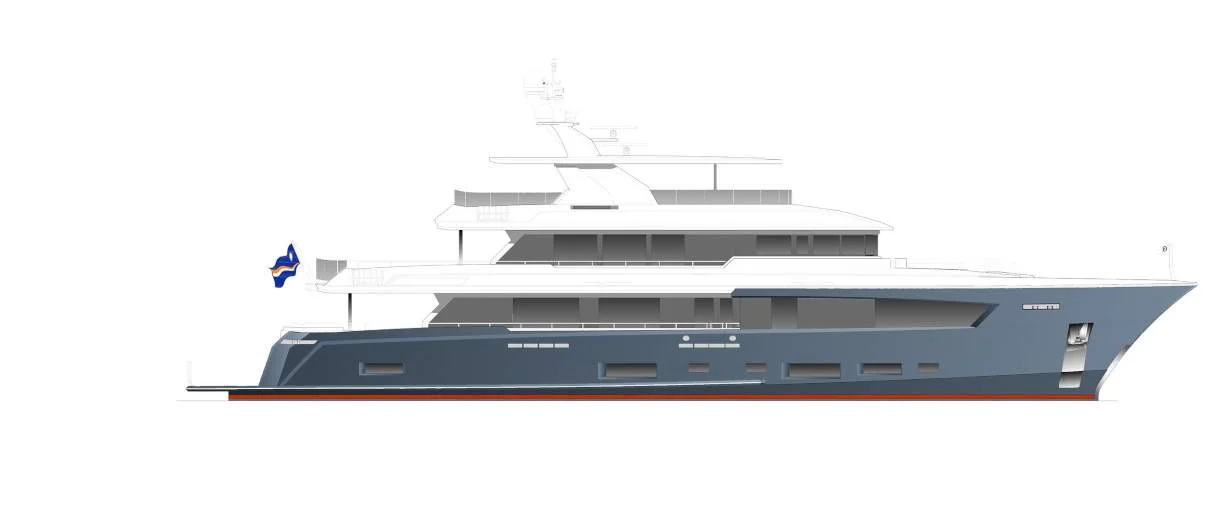
- Privacy Overview
- Strictly Necessary Cookies
- 3rd Party Cookies
This website uses cookies so that we can provide you with the best user experience possible. Cookie information is stored in your browser and performs functions such as recognising you when you return to our website and helping our team to understand which sections of the website you find most interesting and useful.
Strictly Necessary Cookie should be enabled at all times so that we can save your preferences for cookie settings.
If you disable this cookie, we will not be able to save your preferences. This means that every time you visit this website you will need to enable or disable cookies again.
This website uses Google Analytics to collect anonymous information such as the number of visitors to the site, and the most popular pages.
Keeping this cookie enabled helps us to improve our website.
Please enable Strictly Necessary Cookies first so that we can save your preferences!
More From Forbes
Is this 300-foot-long concept the luxury expedition yacht of the future.
- Share to Facebook
- Share to Twitter
- Share to Linkedin
Stormbreaker from Theodoros Fotiadis
Some may say the glut of new expedition yacht concepts that are flying out of the world’s best yacht design firms on a regular basis is evidence that “ultra-luxe-go-anywhere-expedition-yachts” are just a passing fad. But I don’t think that way at all. In fact, I believe superyacht owners want to escape from the everyday more than ever. And there may be no better way to do that than to go where only a very select few get to go on board a yacht that’s up to the challenge of true global exploration.
So, each time a new expedition concept yacht is launched, like the innovative Stormbreaker from the Berlin-based yacht designer Theodoros Fotiadis , I always ask myself “Is this the yacht of the future ?”
Stormbreaker icy waters
According to published reports, it’s designed to be tough enough to be able to cruise to the most remote and beautiful destinations on the planet, from Tropics to the Poles. And I’m pretty sure owns will love the structural glass atrium that spans several decks and will flood her open-plan interiors with natural light.
The explorer lounge aboard Stormbreaker
New Galaxy S25 Ultra Exclusive Teases Samsung’s Ambitious Plans
Ufc 308 loses one of its best main card fights, ‘from’ season 3, episode 1 review: a terrifying return to the creepiest show on tv.
Meanwhile, the concept features a panoramic imaging system to record and broadcast live footage and an interactive infotainment system for real-time environment and voyage awareness designed by ICON connect .
Needless to say, the yacht will also feature a state-of-the-art communication system, providing high bandwidth capable internet connectivity, even at the poles! This hyper-connectivity will appeal to most owners who need to stay even when they’re off the grid.
Stormbreaker in calm waters
Jim Evans, the founder of SuperYachtsMonaco is ready to help a pioneering owner build a 300- or a 377-foot long model. “ Stormbreaker is the next level of go-anywhere explorer,” he says. “The concept incorporates all the elements that solace-seeking clients look for, a tough exterior, attention-grabbing design, a bottomless toy chest, efficient propulsion, long range capability and the highest level of connectivity.”
Meanwhile designer Theodoros Fotiadis says, “Who is the owner of Stormbreaker ? The person that when they see the storm, they want to go into it. The owner will go undaunted where only the bold dare; conquer the elements, explore the world, and experience the exhilaration and tranquility of global yachting firsthand.”
Is this the yacht of the future? We’ll just have to wait and see.

- Editorial Standards
- Forbes Accolades
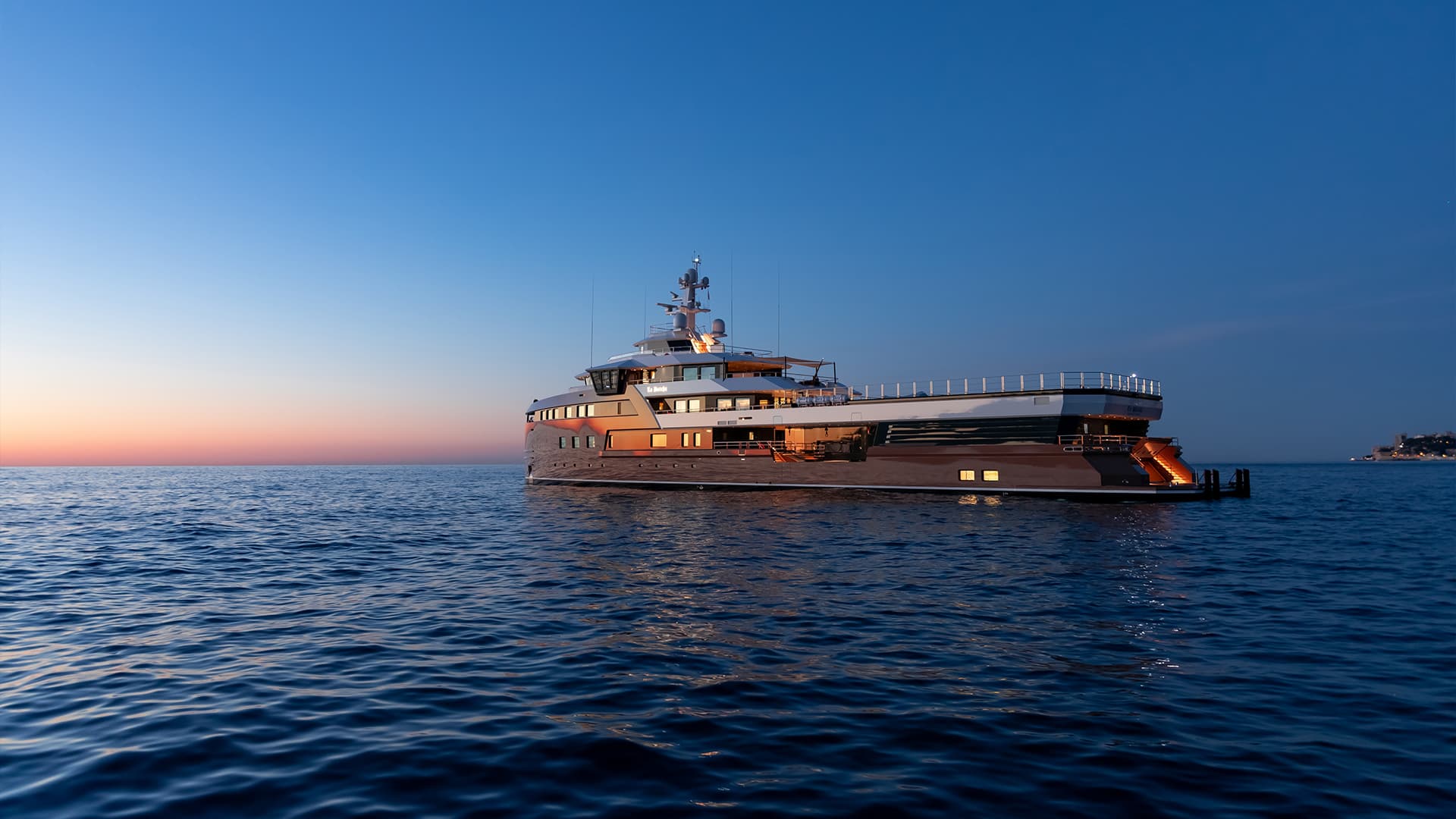
SEAXPLORER SERIES
Whether you choose the 105m, 77m, or 60m version, or a full custom, SeaXplorer is the most capable and efficient luxury expedition yacht ever built.
EYOS EXPERTISE
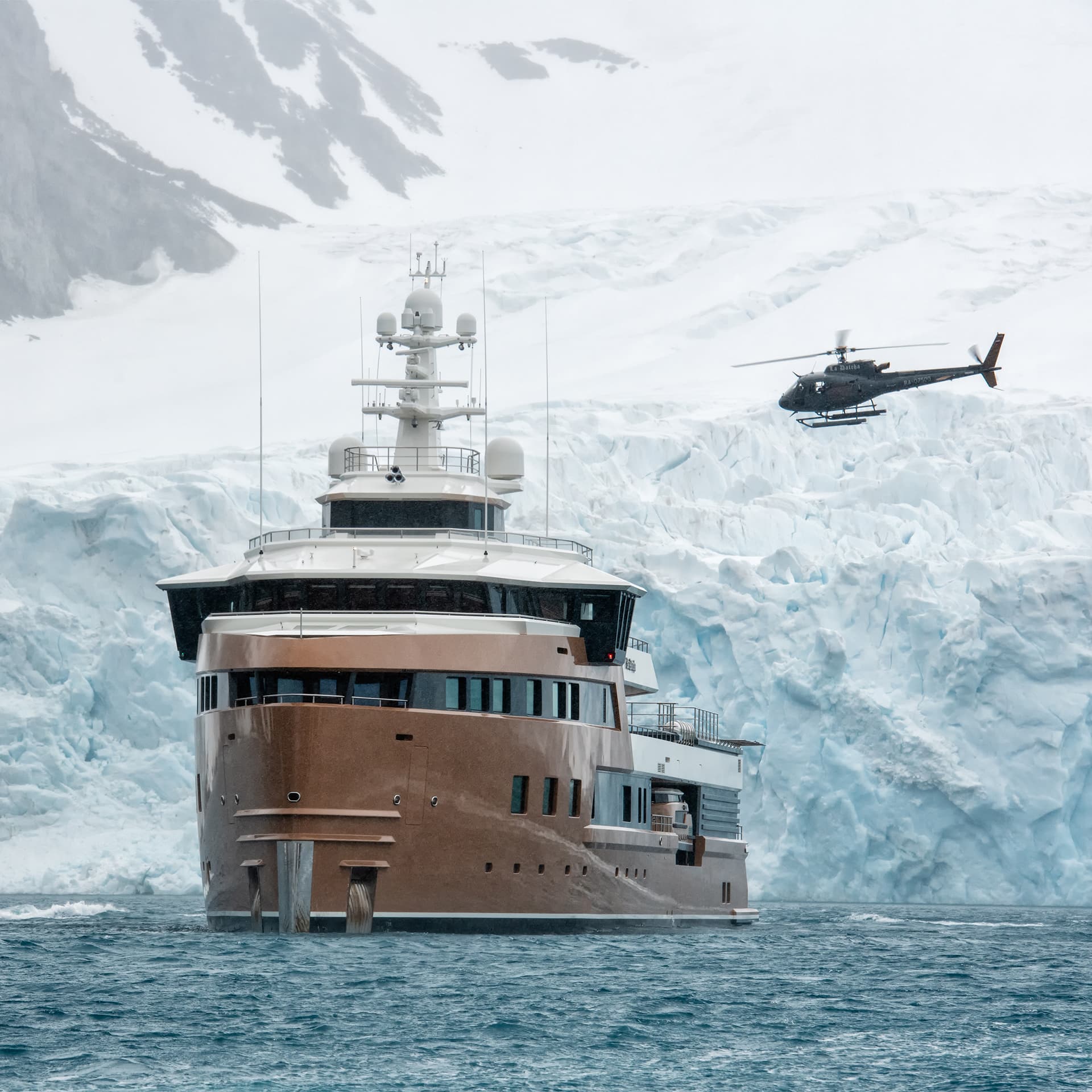
To help create the ideal globally-capable expedition yacht, EYOS Expeditions took over 150 design criteria to DAMEN shipyard. Working with DAMEN’s design team, EYOS advised on details from the hull form and bridge layout to the tender davits and Zodiac boarding arrangements.
SeaXplorer was the first yacht built to meet the new Polar Code Standards, which came into force in 2017. While her entire hull is ice-strengthened, in the most challenging ice conditions, SeaXplorer can go astern using a specially shaped icebreaking stern to break through boundaries that stop other yachts.
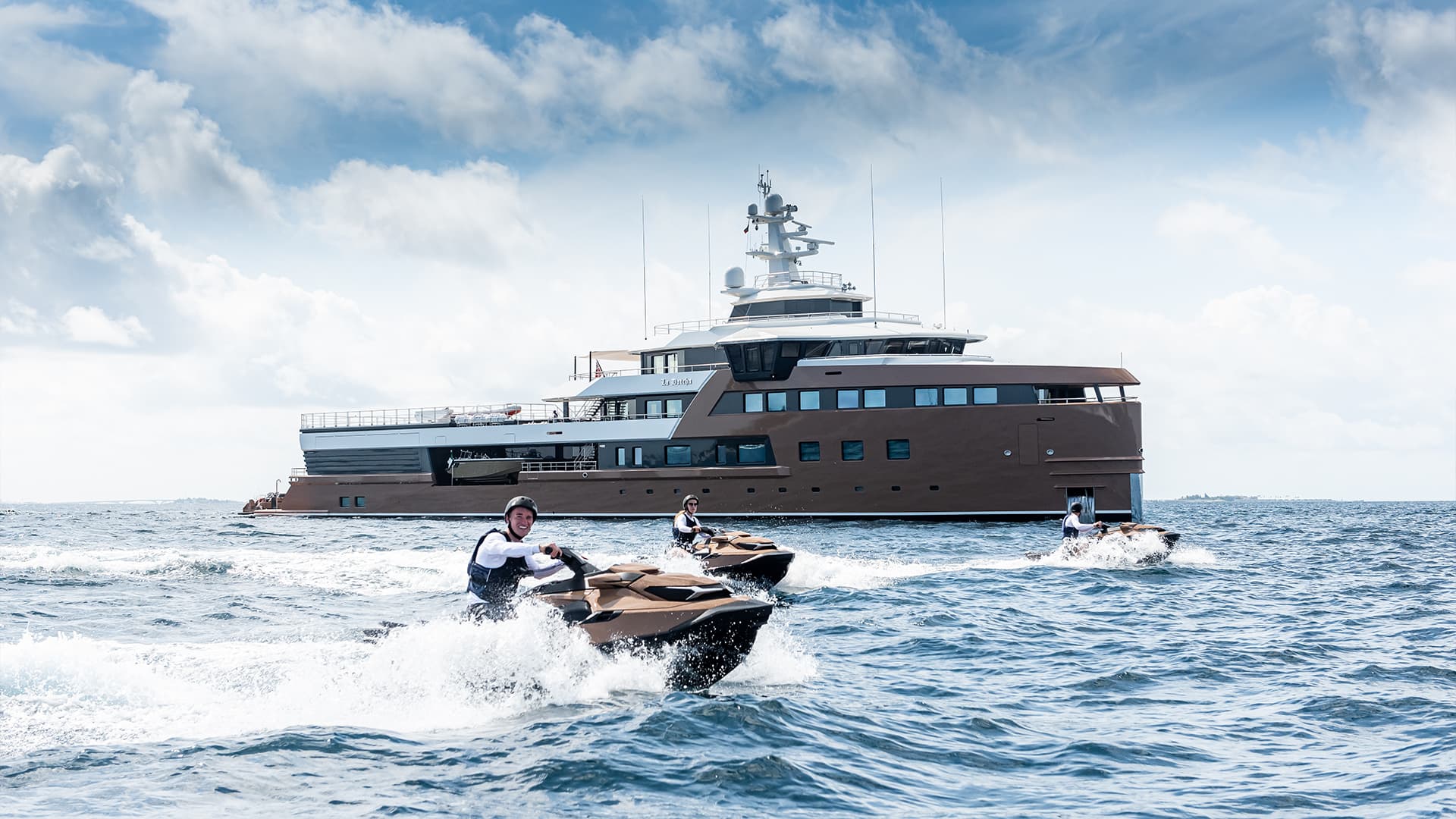
WELL EQUIPPED
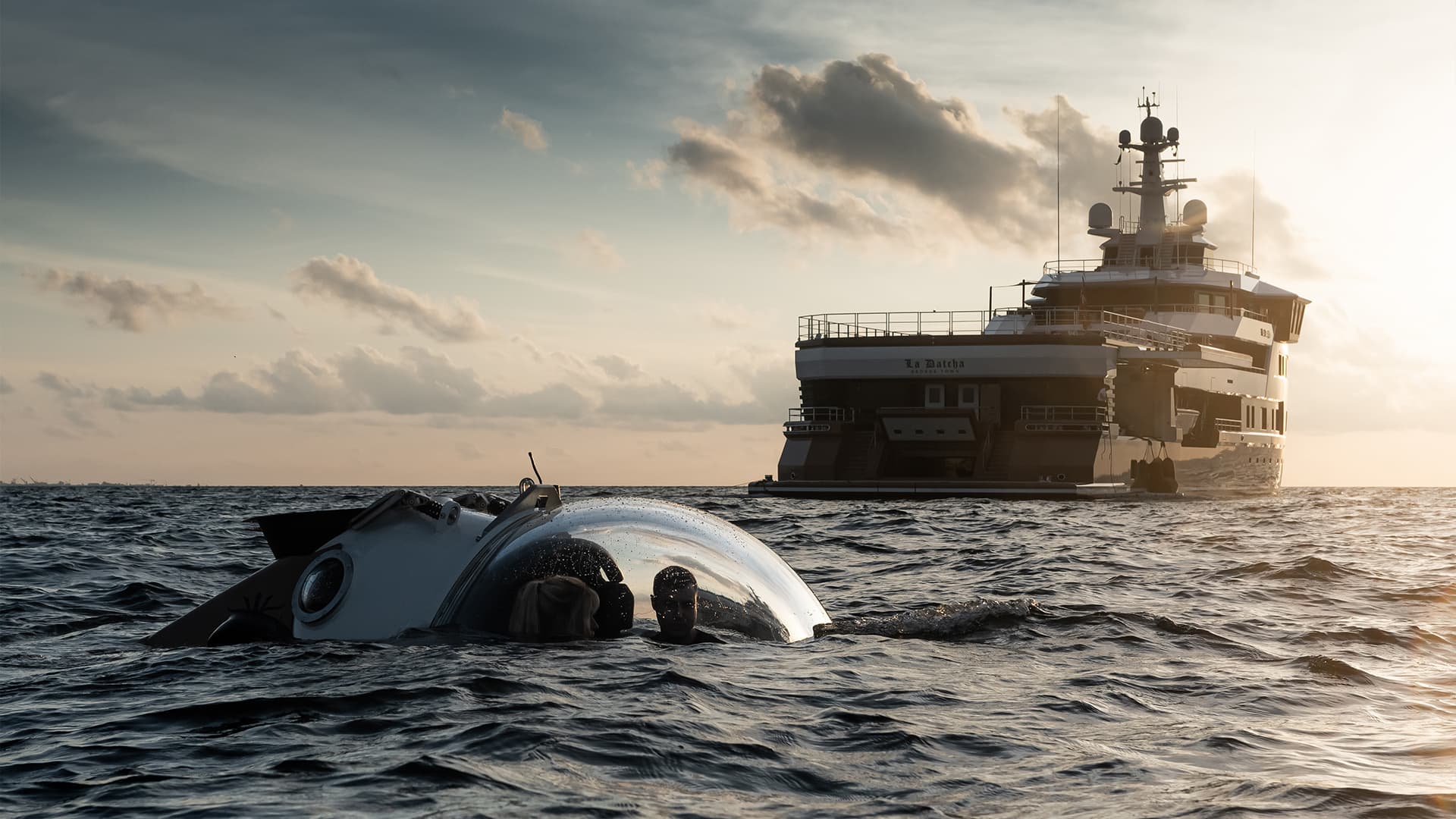
In tropical waters, SeaXplorer is designed for efficient access both above and below the sea.
She features dedicated space for submersibles, dive gear, and a recompression chamber, as well as dedicated storage for an array of carefully chosen tenders. Every detail is infused with knowledge gained over hundreds of expeditions.
A fully certified, enclosed helicopter hangar keeps your aircraft safe no matter where you take your yacht.
TRUE EXCLUSIVITY
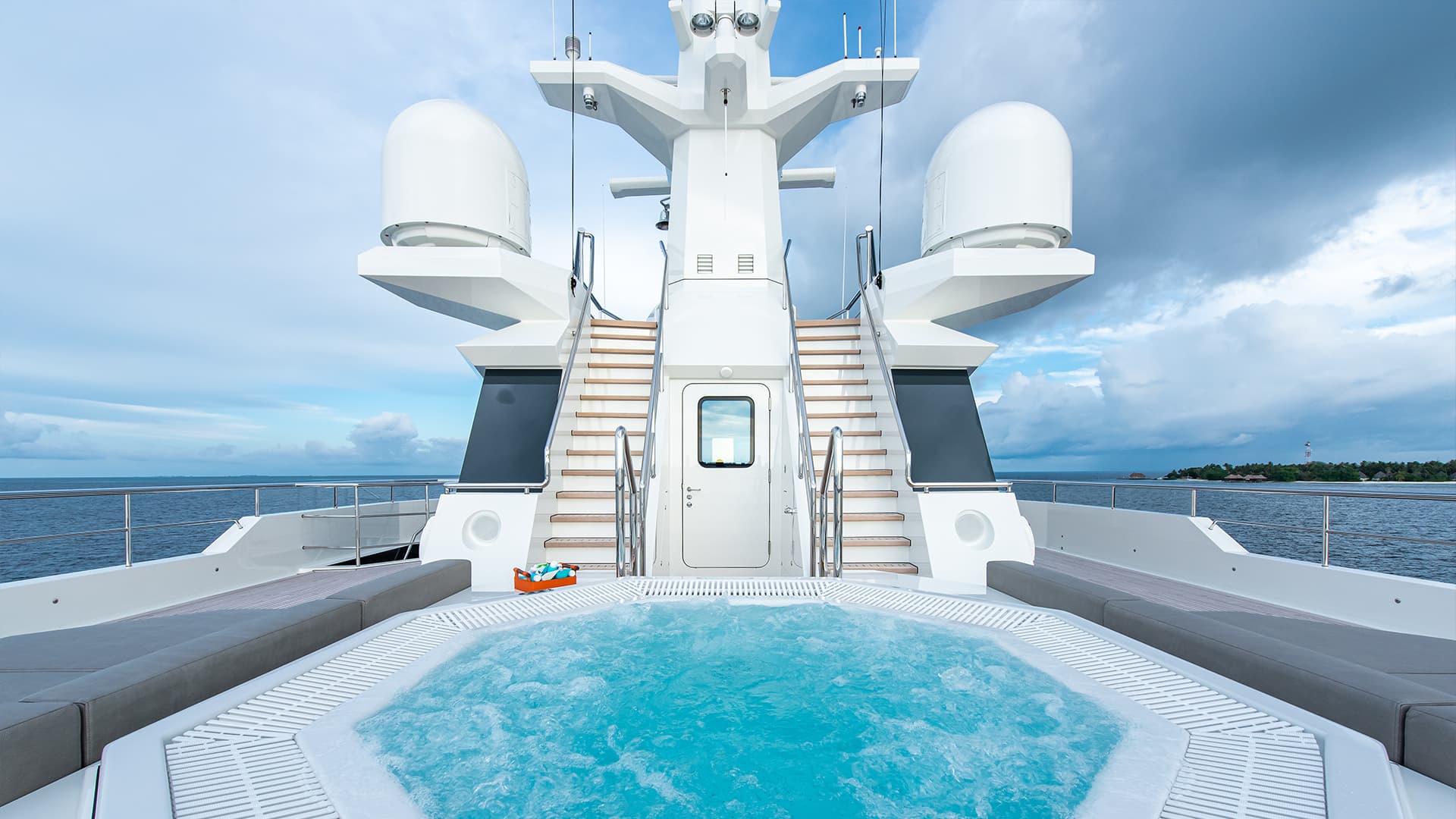
Built with remote destinations in mind, SeaXplorer achieves an unprecedented 40 days of autonomy. Her guests will define their own limits; SeaXplorer offers true exclusivity far beyond the reach of others.
Despite her rugged capability, SeaXplorer is still very much a luxury yacht. Stunning spaces connect guests to the outside world and passing scenery. Thanks to the Damen/Amels synergy, the yacht meets the highest standards for which renowned Dutch yacht builders are known.
SeaXplorer is the pinnacle of expedition super yachting. She is the globally-capable, true luxury yacht we’ve been waiting for. EYOS is proud to have worked with Damen and Amels on this outstanding series of yachts.
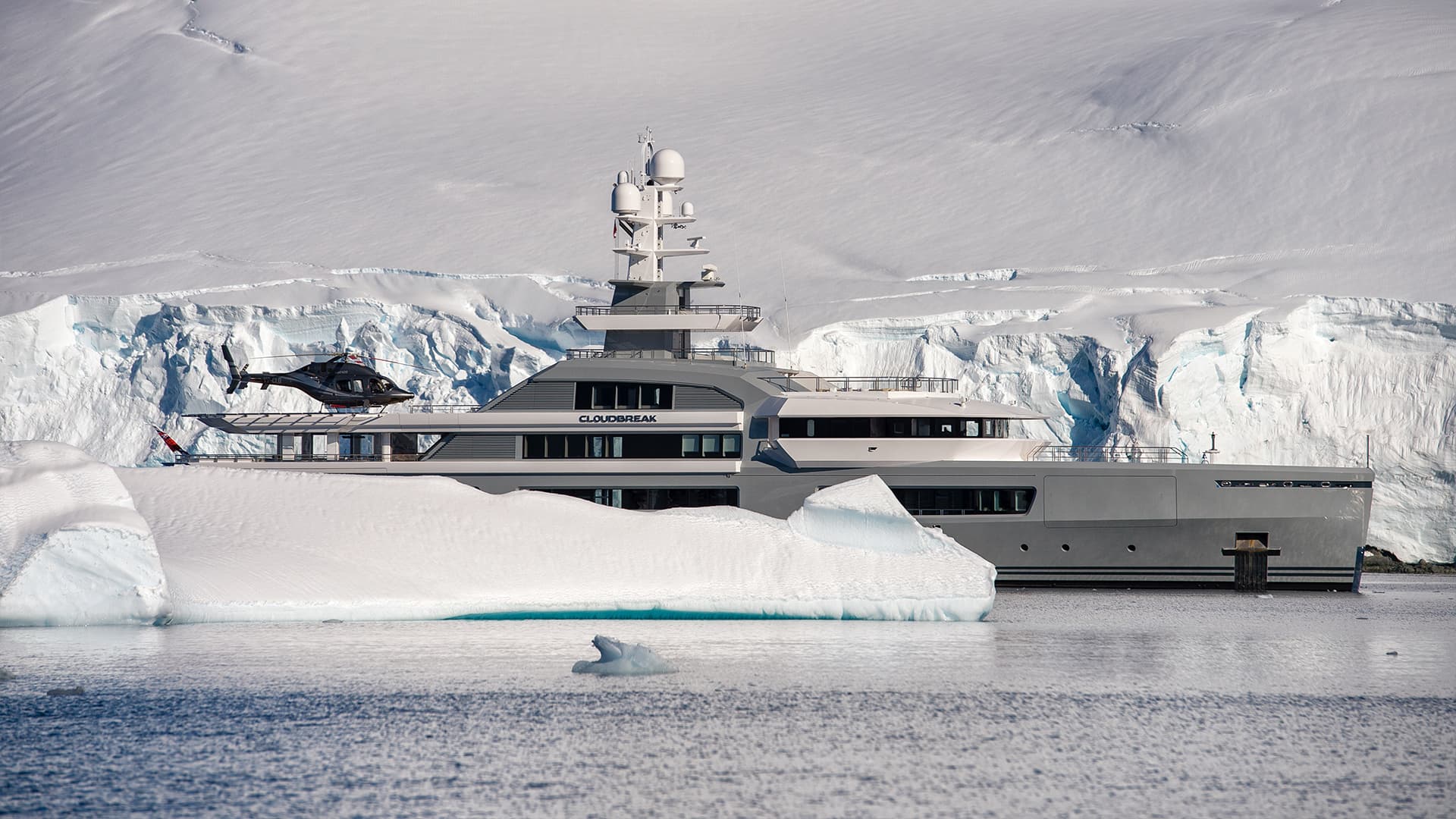
FEATURED STORIES
The first SeaXplorer expedition superyacht has been sold
CONTACT EYOS ABOUT YOUR UPCOMING SPECIAL PROJECT
+1 801 390 7025 | [email protected]
Where can we guide you?

Professional BoatBuilder Magazine
An aluminum expedition catamaran.
By Dieter Loibner , Apr 5, 2022
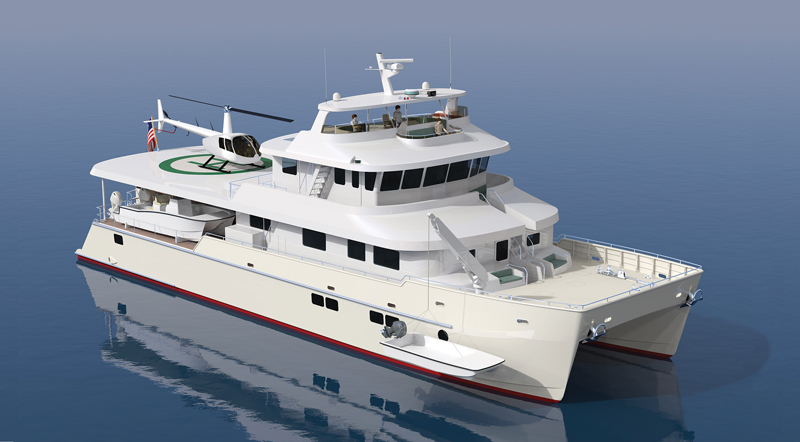
With 110′ LOA, a 35′ beam, and 45′ (33.5m, 10.6m, and 13.7m) of bridge clearance, the H-2 catamaran seeks to make a case for U.S. custom boatbuilding.
Hauling toys beyond the horizon is the raison d’être for a rugged go-anywhere catamaran designed and built in the U.S., a notable exception in the world of big yacht projects.
Gunboat might have left town, but there’s another big catamaran under construction in its old facility in Wanchese, North Carolina. It’s called H-2 , short for Hippocampus 2 , a stout 110-footer (33.5m) that liberally and intentionally quotes from the expedition/workboat vernacular. It’s built from aluminum and was conceived to go to the back of the beyond, where adventure beckons and Vessel Assist doesn’t operate. Aside from commodious and cushy accommodations, the boat offers grid autonomy, ocean-crossing range, and cargo capacity to match the mission of hauling a 26 ‘ (7.92m) tender, a 17 ‘ (5.8m) skiff, a two-person submarine, a four-seat ATV on the main deck, and a small helicopter on the flight deck aft.
The boat was commissioned by Brian Schmitt, 67, a real estate executive in the Florida Keys, who pilots his own plane to commute to the Bahamas, where he keeps Hippocampus , his current 57 ‘ (17.37m) cold-molded wood/epoxy catamaran. I asked him about the jump from 57 ‘ to 110 ‘ . “I never thought I’d have the ability to do that in my own boat until probably the last few years,” he replied, adding that “it would be 120 ‘ [36.58m] if I had to do it today.”
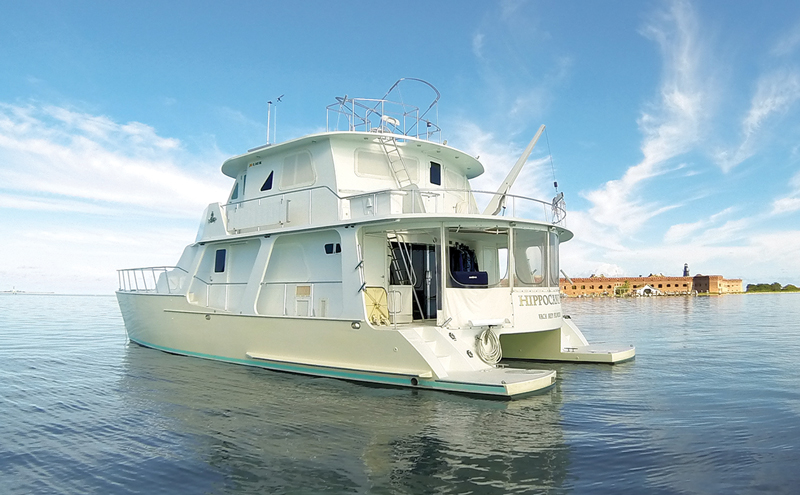
Its predecessor, Hippocampus, built in wood/epoxy, was launched in 2003. At 57′ (17.37m), it is about half as long as H-2, but with 22,500 miles under its keels, it was a useful starting point for designing the new vessel.
Wearing shorts and a shirt with the new boat’s name and logo to our meeting, Schmitt talked openly about his project, which he manages as attentively as his real estate brokerage with 130 agents. Communication is his thing, responding to e-mail questions in near real time (in ALL CAPS) and talking to contractors directly. No project manager.
A passionate diver who habitually explores remote and exotic locales, Schmitt said he was happy with the first Hippocampus , which has three staterooms and cruises at 15 knots on twin 370-hp Yanmars. “It was the vehicle that got our 17 ‘ tender wherever we needed it.” But running the little boat 60 or 70 miles a day lost its charm. “One of the things I wanted was a twin-engine tender that would have more room for dive gear. That ended up being a 26 ‘ Calcutta, so I needed a bigger mother ship.”
With accelerating climate change, the carbon footprint of ships and large yachts is under scrutiny, but hydrocarbons still win when speed, range, and payloads are priorities. While H-2 doesn’t break the mold there, Schmitt pointed to the project’s virtues as a U.S. domestic build. “You can’t complain about global warming when you’re flying around in your G500 jet that’s contributing more CO2 emissions than anybody else in the world,” he said. “You can’t complain about all the boats being built in Germany, The Netherlands, and Italy, and then go buy a boat [there].” Schmidt wanted to build locally, keeping jobs and money in the U.S. Besides, he noted, this approach simplified communications and enabled him to personally check on progress during COVID. Perhaps most importantly, he could pick a team of trusted and compatible mates to turn his dream into a boat.

The vast build hall left vacant when Gunboat left Wanchese, North Carolina.
He selected John Marples, a fellow pilot, inventor, and multihull specialist for the design and Felix Herrin to build H-2 . Both men had worked for him on Hippocampus , and their familiarity helped when meeting today’s challenges, such as damaging trade tariffs that drove up aluminum prices, and a pandemic that killed millions, wreaked havoc on global supply chains, and caused labor shortages in industrial sectors. These factors have conspired to delay H-2 ’s launching by roughly two years and counting.
Advantage Aluminum
A key decision early on was to build in aluminum, which promised a robust structure but required extra steps to deal with corrosion and noise mitigation. “Construction was reduced to something simple—a V-bottom deadrise model, stretched out,” Marples explained. “There wasn’t any benefit to round bilges on an aluminum boat. You’d have to add internal structure to support the flat panels, and it drives the cost and difficulty of construction way up. We’re talking about a speed-to-length ratio of 2 or less, which is not a big deal. His current boat would do a speed/length of about 3, so the extra length means that you’re never really pushing the boat that hard, so shape was not a huge consideration.”
Marples and Herrin go back at least three decades to their mutual acquaintance with naval architect and boatbuilder Dave Dana, who assisted Marples with the hull design for Admiral Pete , a catamaran passenger ferry still serving Puget Sound. Herrin works with different construction materials, but having built crew boats for Petróleos de Venezuela (PDVSA) at Sea Force in Palmetto, Florida, he has spent considerable time with aluminum.

Taking a break during IBEX 2021 are builder Felix Herrin (left) and owner Brian Schmitt. H-2 is their second joint project with designer John Marples.
The structural components on H-2 are 5083-H32 alloy aluminum plate and extrusions of 6061-T6 alloy. Scantlings, materials, and weldment comply with the American Bureau of Shipping’s (ABS) 2016 design guidelines for pleasure motoryachts. Hulls and wing structures have transverse frames and bulkheads spaced on 36 “ (0.91m) centers. Those frames are supported by substantial centerline vertical keels (CVKs) welded atop twin 3 “ x 8 “ (76mm x 203mm) solid extruded-aluminum-bar keels. Intermediate subframes in the forward and aftermost hull compartments strengthen the hulls for operating in ice. Schmitt indicated he wants to traverse the Northwest Passage. For the same reason, there’s 3⁄8 “ (10mm) plate running the length of the boat above and below the waterline.
The topside and underwing plating is primarily ¼ “ (6mm), with areas of 5⁄16 “ (8mm) to strengthen slamming zones in the bow. The main deck plating is also 1/4 “ while the foredeck plate is specified at 5⁄16 “ . The bottom plating is 5⁄16 “ in the aft two-thirds of the hull and 3⁄8 “ forward. “We built all the frames and bulkheads first, then scarfed together the keel sections [and] lined those up on the bunks that we built on,” Herrin explained. “We welded the CVK on top of the keel, then started installing frames.”

Hulls and wing structure have transverse frames and bulkheads on 36″ (0.91m) centers. The hulls are supported by centerline vertical keels.
Herrin said he changed aluminum suppliers midway through the project, sourcing from Bayou Metal Supply , an ISO 9001:2015–certified distributor in Slidell, Louisiana. “We sourced the material from Greece and from domestic suppliers,” said Taylor Smith, who handles Bayou’s sales. Tariffs, he said, did not slow down business much, but the aluminum cost more. “Felix sent cut files. We had the material in inventory, we cut it, processed it on a router, and shipped it on time. Everything flowed well.”
Naval and structural engineering and detailing was contracted out to Van Gorkom Yacht Design in Portsmouth, Rhode Island. “My first responsibility was looking at structures,” Geoff Van Gorkom said. “Given that this is an aluminum yacht, we can do literally all the structures in 3D and have all the metalwork precut before it came into the yard. All the frames and longitudinals and all the primary structure were precut, which saved huge amounts of time.” Van Gorkom said he uses Rhino 3D and some of the numerous modules such as Orca 3D for hydrostatics and hydrodynamics, and 2D AutoCAD to produce construction details.

Helping save time and money, 3D-modeling allowed frames, longitudinals, and the primary structure to be cut before being sent to the building site.
Van Gorkom observed that H-2 is not a fussy high-performance vessel that needs minimum weight to achieve maximum speed. Besides ABS guidelines that address torsional loads in catamaran structures, he also consulted A.L. Dinsenbacher’s paper “A Method for Estimating Loads on Catamaran Cross-Structure” ( Marine Technology , Vol. 7, No. 4, October 1970) to estimate load conditions in beam and quartering seas. “This is going to be a very stiff boat. It’s going to be a very strong boat simply because it has to be, and that was one of the criteria that Brian put out there right from the very start of the project. The boat is sturdy and stout, a strong expedition yacht.”
Van Gorkom also engineered the setup for a folding deck crane housed under a flush hatch in the helideck on the port side to launch and retrieve the two-man submarine or the ATV. “It’s basically an enclosure that opens up, so the crane extends out,” he explained. “It comes up on a telescoping pipe to swing out and pick up something from the side of the boat.” It required support from beams on each side of the crane and cutting a slot in the helideck for the lifting bridle so the loads can move inboard or outboard. On the starboard side, the 5,500-lb (2,492-kg) Calcutta tender is an even heavier load moved by twin overhead beam cranes. The 17 ‘ Twin Vee is launched and retrieved from the foredeck with a 2,500-lb-capacity (1,153-kg) crane.
Catamarans are known to be weight-sensitive, so how will H-2 handle the weight of all the toys and high superstructure? The arch over the flybridge is 33 ‘ (10.05m) above waterline, Van Gorkom confirmed. “Add another 10 ‘ [3.05m] for the radar, mast, etc., so a comfortable bridge clearance would be around 45 ‘ [13.7m].” Marples conferred with Van Gorkom about the effect of the added weight on the center of gravity, which was deemed “almost imperceptible,” Marples remembered. A quick calculation suggests that a 5,500-lb deck load is equal to only 1.57% of a full-load displacement given as 350,000 lbs (158,550 kg).
High Power, Low Noise
Van Gorkom hired engineers at HydroComp to evaluate the design’s hydrodynamics and propulsion systems, including the influence of hull-shape parameters and demi-hull spacing on resistance. HydroComp also offered a speed-power prediction to aid with engine selection and recommended optimum shaft rpm and propeller parameters. Technical director Donald MacPherson, who prepared the report, outlined the process and findings: “Particularly interesting for this project was the use of its novel analytical distributed volume method [ADVM] for the vessel’s resistance modeling. This 2D technique (between parametric methods and CFD) uniquely allows for assessment of the influence of local sectional area curve regions (such as ‘shoulders’ or inflections) in wave-making drag. It also directly evaluates the effects of catamaran hull spacing.” HydroComp helped optimize the hulls by identifying the regions that contribute most to wave-making drag, and securing a 3% reduction in total drag at the design speed by making what MacPherson called “very minor changes to the immersed volume distribution.”

Rob Ayers works on the installation of the starboard engine’s Evolution Marine Shaft System that will be fitted with a 36″ (0.91m) five-blade propeller.
That simulation was mapped to benchmark performances of four similar catamarans, and the process was run for two design variants, followed by a propulsion simulation for partial-load conditions. The hull-spacing study concluded that the originally designed 35 ‘ (10.7m) beam remained suitable despite the boat being 20 ‘ (6.1m) longer than originally drawn. The chosen propulsion system comprises two MTU 10V 2000 M96, 1505-mhp diesels with ZF 3000 flange-mounted marine gears, providing an estimated top-speed range of 20–22 knots, cruising speeds of 12–15 knots, and 10–13 knots for long-range voyaging. Actual performance will be established during sea trials.
The recommended propeller specifications developed by HydroComp were for five-blade models with 36 “ diameters. HydroComp applied PropElements, a wake-adapted propeller-analysis tool, to determine the advisability of installing a nozzle or shroud to restrict transmission of pressure pulses to the hull and to create a more uniform inflow. This would reduce interior noise but would increase appendage drag and power demand. Schmitt said he will wait to see if cavitation or prop noise is an issue before making a final decision.
He invested heavily in noise and vibration mitigation, knowing that an aluminum boat won’t provide the natural sound-dampening of a wood/epoxy structure like that of his first Hippocampus . Consulting with Soundown of Salem, Massachusetts, Schmitt wanted to replicate what worked well on his old boat, starting with the Evolution Marine Shaft System, in which the prop shaft runs in an oil-filled tube and uses roller and needle bearings instead of standard water-lubricated bearings. “You have a lot less shaft noise, but one of the primary benefits of an integral thrust bearing is that it transmits all the thrust directly into the hull, as opposed to pushing on the gearbox or the engine and gearbox combination,” said Sam Smullin, Soundown’s marketing and quality assurance manager. “It allows for a much softer engine mounting, so you reduce the noise from the shaft itself and get a much quieter engine installation, which reduces structure-borne noise.” Because of the relative weight sensitivity of catamarans, Smullin said, “it’s particularly important to do a really good job on the driveline.” His father, Joseph Smullin, president of Soundown and J&A Enterprises Inc., an engineering firm for noise and vibration control, estimated that this could reduce driveline noise levels by 5 dBA to 10 dBA compared to a conventional system.

Clemente Perez, one of Herrin’s build crew, works on the interior. The extensive sound and thermal insulation includes foam sprayed into the cavities.
Soundown also looked at the two 38-kW Northern Lights gensets, which have double-isolation mounts to reduce structure-borne noise. The firm also recommended structural changes to ensure that the mount foundations were as stiff as possible.
Energy from propulsion or generator engines invariably transmits to the boat structure and then resonates through big, flat panels like bulkheads, decks, ceilings, and liners, causing the familiar vibrating rattle. To dampen those vibrations, Herrin said he used Roxul, a lightweight, semi-rigid stone-wool insulation for fire resistance and sound control. His crew also sprayed cavities with Dow Froth-Pak, a quick-cure polyurethane foam for thermal insulation, and installed Sylomer (a microcellular PUR-elastomer) between the structural components and the floors, walls, and panels. “We glued the Sylomer, which is kind of a spongy foam, to the structure of the boat, and then the plywood of the subfloors and walls are glued to that,” Herrin explained, adding that this created a floating interior without any fasteners.
The plywood, called QuietCore, is a composite sandwich panel comprising marine plywood skins and an acoustic damping layer that converts acoustic energy into small amounts of heat that are dissipated. Soundown claims that an 18mm (0.7 “ ) QuietCore bulkhead can reduce noise transmission by up to 10 dBA, an audible reduction 50% greater than with regular marine plywood of equal thickness.
Electricity for a Small Town
Going off grid on H-2 does not mean anyone will suffer, as long as the electrical system keeps powering the boat’s myriad house loads—hydraulic Maxwell windlasses and thrusters; a Webasto air-conditioning system; two full-size stand-up freezers, two refrigerator freezers, and two under-counter refrigerators in the galley, all by Vitfrigo; Krüshr compactors for recyclables and garbage; Headhunter sewage-treatment system; Alfa Laval fuel-polishing system; two FCI watermakers; a complete set of Garmin navigation electronics with full redundancy; and a Böning vessel control and monitoring system.
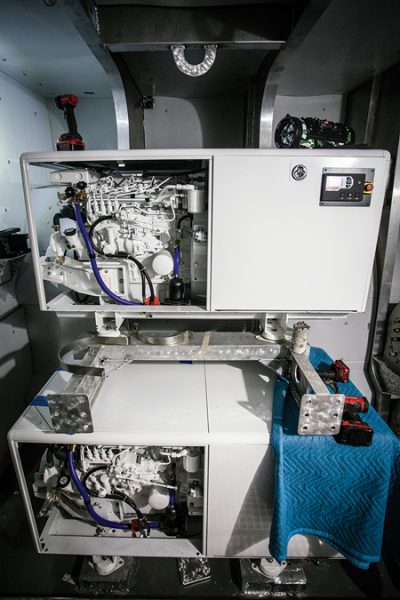
Two Northern Lights 38-kW gensets are the heart of H-2’s AC system, which also includes a 37-kW Atlas inverter to connect to shore power in foreign ports.
Much of the AC side was designed and specified by Ward’s Marine Electric in Fort Lauderdale, Florida, in cooperation with OceanPlanet Energy of Woolwich, Maine, and principal Bruce Schwab, who helped design and integrate the DC components. “Today there’s a big trend in the industry to use shore-power converters as inverters and superlarge lithium-ion battery banks to provide power, at least temporary power, for major loads like air-conditioning, chiller plants, and things like that,” said Ward Eshleman, chairman of Ward’s Marine Electric. “So, rather than using only smaller inverters and synchronizing them and stacking to get additional kW, the trend for the larger vessels is to use shore-power converters as inverters. There is an inverter bus in the main switchboard.”
True to its go-anywhere mission, H-2 was fitted with an Atlas 37-kW inverter to connect to shore power in places that do not serve 60 Hz, 240V single-phase power. “We can take anything from 90V to 400V and pretty much anything from below 50 Hz to the 60 Hz and single- or three-phase,” Herrin explained.
Eight GTX24V315A-F24 lithium-ion batteries from Lithionics are split between a house bank that can run all DC loads for at least 24 hours, and an emergency bank to operate critical DC loads—display screens, radios, nav lights—for 24 hours. The boat is equipped with 10 Solara Ultra-S 160W panels paralleled in two groups of five each, connected to two Victron SmartSolar MPPT 100/50 solar controllers to charge the house bank. Given enough sunshine, solar and battery power should be “capable of running lights and refrigeration but not air-conditioning or heating,” Schmitt said. “Since we will likely spend most of our time in the tropics, we did not believe that solar power alone could do the job we needed.”
OceanPlanet Energy specified four Victron Buck-Boost DC-DC converters, two for each engine, to help charge the house bank from the starter batteries without having to modify the engines’ stock alternators, which would have voided the warranty. “The converters activate based on the input voltage from the starting batteries,” Schwab explained. “With lower rpm, the alternators would not produce enough current to feed both converters without the starting-battery voltage dropping, turning the converters off. Then the voltage will rise, the converters turn on again, drop the voltage, turn off…over and over. Staggering the input voltage cut-in, hopefully starting the converters one at a time, will more smoothly supply power to the house bank across the engine/alternator rpm range.”

OceanPlanet Energy specified the DC system including DC/DC converters and hefty battery banks to power house loads and critical electronics.
There are two 4,500-watt 240V split-phase engineroom-ventilation fans connected to two Victron Quattro 5-kW 24V inverter-chargers configured for 240V/120V split-phase AC loads. They can accept AC inputs from two sources (shore power or generators) and automatically connect to the available source. “In the event of a grid failure or power disconnect, they take over the supply to the connected AC loads by inverting from the Lithionics house-battery bank,” Schwab said.
“It’s more complicated than that,” according to Herrin. “Typically, we’re going to be operating with the A-bus and the B-bus tied together, so we can power everything with one generator. The B-bus actually passes current through the Victron inverter-chargers on its way to the load. We have the ability to split the A-bus and the B-bus and run the A-bus on one generator and the B-bus on the other in the few instances we’re exceeding the capacity of one of the generators. If we lose both generators, then the essential loads are still going to be carried,” meaning engine vents or water pumps.
Redundancy and emergency backups also figured largely in the deliberations of John McKay, manager of the Switchgear Systems Division at Ward’s Marine Electric and point man for this project.
One of his challenges was limiting the voltage drop in the estimated 53 ‘ (16.2m) cable run between engines, which in an emergency allows the starboard engine to be started from the port battery and vice versa. “For a starter group, you can allow a 20% voltage drop,” McKay said and noted that starting the engines requires 720 amps, while the gensets needed only 200 amps. “I was keeping the 720-amp current between 7% and 11% voltage drop, getting up to some pretty good-sized copper. Some sections of the run were 240mm2 [500MCM] cable.” Knowing that the boat is capable of going to high latitudes, McKay recalled his youth and the frigid winter mornings in Massachusetts, “where you can crank a diesel all day long at a low rpm, and it’ll never start. You just need to turn it over one or two times at a higher rpm, and it’ll be running. So, I was making certain that the starter was going to crank at the highest rpm possible and not lose it all to voltage drop.”
Protecting Assets and Finishing the Job
No matter how fast or how far H-2 will travel, corrosion caused by galvanic current between dissimilar metals, by stray currents or by electric fault, is an enemy that needs to be kept in check. That’s the calling of Ted Schwartz, who runs Electro-Guard (Mount Shasta, California). He’s one of the country’s foremost experts on cathodic protection, and also served on ABYC’s E2 Cathodic Protection Project Technical Committee.
“We designed the system and supplied all the equipment and steered them through the installation,” Schwartz said. It’s a 15-amp impressed-current-cathodic-protection (ICCP) system, model 715 A-2, with three anodes and two reference cells. Regarding the boat’s Evolution shaft system with driveshafts running inside an oil-filled tube, Schwartz said: “It was a real challenge because you can’t actually make contact with the propeller shaft on the inside of the boat.” He consulted with Soundown and found a solution. “At the coupling on the inboard end of the tube, a bit of the shaft stuck out through the seal,” Swartz said. “There’s this coupling that Soundown built that fastens to the shaft, and we asked them to provide a surface on that coupling where we could put our silver slip rings on [to provide an electrical connection] to protect props and shafts.”
Every anode can deliver up to 5 amps of current using its own current controller that receives a signal from the main controller, which determines exactly how much current each anode will put out. The entire system consists of three anodes, three current controllers, the main controller, and a separate monitoring station connected to the controller by signal cable. Later, Schmitt also ordered a backup system employing aluminum sacrificial anodes.
On catamarans, the company installs a reference cell aft near the prop of each hull, and an anode on the aft section of each hull, and one anode amidships on the inboard side on one hull.

Chromate, two layers of epoxy, copious amounts of fairing compound, and various primers rendered the surface fair and ready for a yacht-quality paint job.
At the time of this writing, the vessel had been shot with chromate and two layers of epoxy before approximately 500 gal (1,893 l) of fairing compound and 325 gal (1,230 l) of various primers rendered the surface fair and ready for a yacht-quality Alexseal paint job with 35 gal (132.5 l) light ivory, 24 gal (91 gal) stark white, and 2 gal (7.6 l) cordovan gold. Parallel to the exterior, construction was on the home stretch with installation of the crew quarters and the saloon overhead. On the systems side, pressure checks were performed for hydraulics and plumbing.
Since H-2 is a much larger and more complex vessel than the original Hippocampus , with a multitude of systems that need to be managed, monitored, and maintained, I was curious how many crew Schmitt was planning to hire to help run his new boat. He said he consulted with captains and headhunters, and “the consensus is three or possibly four at most. I just completed my 100-Ton Masters and will build time on the new boat as well. We won’t charter and are not accustomed to being cooked for or served or having our beds made and all that. So mostly I’m looking for a qualified captain and engineer to maintain the systems.”
Little surprise that a hands-on operator like Schmitt does not want to cede too much of the game he loves to play. But as big, bold, and broad-shouldered as H-2 will be when she finally emerges from the old Gunboat shed in Wanchese, the proud owner is quick to remind anyone that it’s still “a vehicle to get the toys wherever.”
H-2 : The Designer’s View
H-2 ’s owner, the adventurous Brian Schmitt, has dived into deep caves to see submerged caverns, hand-fed large sharks that would normally view him as food, and spent years in his off-time exploring Caribbean archipelagos in Hippocampus, his current 19-year-old 57 ‘ (17.4m) power catamaran. Nearing retirement age, he gave the order for his “ultimate” yacht.

The foldable hydraulic deck crane to launch and retrieve a two-man electric submarine or an all-terrain vehicle required cutting a slot in the helicopter deck for the lifting bridle.
The first talk about the new design was between the owner, the builder, and me. As we discussed the mission of the boat, it became clear that it would fall into the category of expedition vessel with more guest staterooms, more range, and more room for equipment than his old boat. Brian defined the function of the vessel as a carrier for a 26 ‘ (7.92m) twin-outboard catamaran, an outboard skiff, a small car, and a small helicopter, which needed a flight deck. This vessel was to be used with family and guests while also serving as an operations base for outbound travel by air, land, or sea.
Aside from commodious accommodations, a key requirement was comfortable motion on rough seas. This was to be a catamaran, like his current boat, which offers extensive real estate afloat in a seagoing vessel. The only restriction for the new design was a beam no greater than 35 ‘ (10.6m) to fit the largest Travelift.
The trade-off for overall beam width involves room versus roll motion. A wider catamaran responds more quickly to roll in seaways but with less amplitude, whereas a narrower beam rolls more slowly with slightly more amplitude. The slower roll is preferable as long as overall roll stability is maintained. Roll in catamarans is unlike roll in single-hulled vessels. Because the vessel is supported by two buoyancy chambers (hulls) with distance between them, motion has little to do with roll inertia, but rather with response of the hulls to the seaway. Each hull responds to a passing wave independently by heaving (up/down) and rolling, which is a circular motion around the center of gravity (CG) that translates to lateral motion when standing above the CG, especially high up on the bridge. Power catamarans, unlike sailing catamarans, do not require wide hull spacing to generate righting moment (to support a sail plan), so they can have closer hull spacing, which still preserves sufficient stability, slows wave-response roll characteristics, and takes up less space in port.
One of the expected routes for this vessel is the Northwest Passage over the top of North America. Boats venturing there can expect floating ice, so we added thicker hull plating at the waterline and an ice-separation chamber on the cooling water intakes. We also designed the hull to give the propeller protection by positioning it behind a deep canoe-stern afterbody with no exposed shaft. A rudder horn, below the propeller extending aft from the hull, adds support for the rudder and protection for the prop. This configuration is useful as a hedge against the possibility of grounding. In fact, this boat can be careened on the beach between tides if necessary for repairs. The hull includes a strong, deep, vertical keel structure that allows for blocking anywhere along its length.
Speed and range became the largest determinates of the design. A maximum range of 4,000 miles at 15 knots (enough to cross the Atlantic Ocean) was proposed. Catamarans are easily driven at modest speeds due to lack of significant wave resistance by narrow hulls. A preliminary speed prediction analysis showed that we would be in the ballpark with about 1,400 hp (1,050 kW) and 5,000 gal (18,925 l) of diesel per hull. The final installed fuel capacity is 12,500 gal (47,313 l).

The general arrangement plan shows crew quarters in the hulls, three guest cabins, office, saloon, and galley on the main deck and owner’s suite on the bridge deck level.
A totally new design normally goes through a lengthy proposal and critique cycle between designer and client, especially if the client is knowledgeable and involved. The vessel’s first iteration started at 90 ‘ (27.43m) LOA, but it became evident that it needed more length to relieve a number of ills. After adding 10 ‘ (3.05m) we saw improvements, but it wasn’t until the 110 ‘ (33.5m) length proposal that we felt all the requirements had been satisfied: more slender hull shape, more open interior space, and better placement of machinery and tankage. The flight deck for the helicopter became larger, and the forward superstructure fairings gave the boat a sleeker look. And at 110 ‘ we achieved an efficient length versus waterline beam ratio that reduced wave drag and fuel consumption at the target cruise speed.
While beam remained at 35 ‘ , lightship displacement increased significantly to 230,000 lbs (104,190 kg). Accommodations now include crew quarters for four persons in the bows; three double guest cabins and a ship’s office forward; a large saloon amidships with adjacent galley, and a dive and a storage locker aft on the main deck. The upper deck is arranged with a full-width-bridge steering station forward, protected by a Portuguese bridge, and a master stateroom with en suite bathroom aft. The flight deck extends aft of the master stateroom. Access to the upper deck is by either a staircase from the foredeck, an interior staircase adjacent to the ship’s office, or by stairs from the starboard side deck.
The largest variable weight on the boat is fuel, so the tankage is located amidships to minimize its influence on trim. Engine and machinery rooms aft of the tankage take up the remaining spaces all the way to the transoms. Other amenities include a utility area aft of the crew quarters port side with storage and washing machines, and a walkway through the tank spaces and enginerooms to the boarding decks at each transom. Another late addition is the flying bridge to aid with shallow-water operation by improving the vantage point to see coral heads and other obstructions. Its protective bimini serves as a mounting platform for lights and antennae.
—John R. Marples
Read more Construction , Design , Drawing Board , Yards articles

- Infusing a Workboat Hull with Elium
Recyclable thermoplastic resin and a crew of trainees are put to the test building a commercial fishing boat at DJ Marine in Pointe-Sapin, New Brunswick.

- Counting Carbon with LCA
A yacht designer and experienced builder of composite boats test-drives life cycle assessment software customized for the marine trades.

- From Langan Design Partners, a Classic Cutter
Designing, engineering, and building sailing yachts 90′ (27.4m) or more in length once was common in the U.S. It’s happening again at Rockport Marine in Maine: Project Ouzel, a 95′… Read more »

Recent Posts
- Volvo-Penta’s Bid to Future-Proof IPS
- AIRMAR Achieves World’s First OneNet Product Certification
- Companies (91)
- Construction (115)
- Design (168)
- Drawing Board (11)
- Education (29)
- Environment (18)
- Events (22)
- Materials (55)
- Obituary (18)
- People/Profiles (49)
- Products (18)
- Propulsion Systems (35)
- Racing (17)
- Repair (37)
- Rovings (326)
- Short Cuts (3)
- Sponsored Partner News (19)
- Systems (80)
- Task Sheet (1)
- Uncategorized (29)
- Wood to Glass (8)
ProBoat.com Archives
Design and New Construction
Explorer and expedition trawler yachts, expedition yacht designs.
Find yacht designs below with renderings, specifications, and layouts including actual pictures of finished designs. Please Contact Us for more information of yachts displayed on this page.
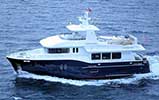
All Ocean Yachts 90 Fiberglass
Full range of overing designs.
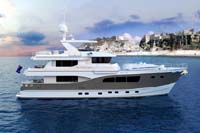
All Ocean Yachts 90 Steel
Luiz debasto 250' explorer yacht.
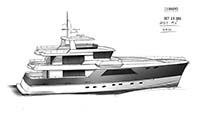
New Concept Design for 49m Explorer
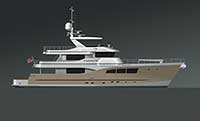
All Ocean Yachts 100 Steel
Preliminary kirschstein design.
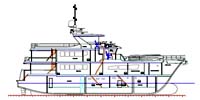
All Ocean Yachts 100- 5 Stateroom, Twin Masters, Open Galley
Michael kirschstein explorer yacht designs.
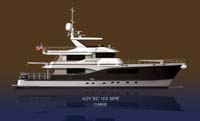
All Ocean Yachts 103 MPE Fiberglass
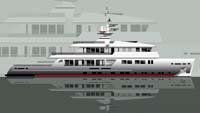
Modern Concepts in Designs for Explorer Yachts
All ocean yachts 103 mpe steel.

Bray 125 Foot Explorer
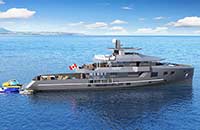
All Ocean Yachts Bray Design 132
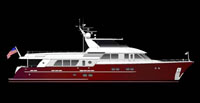

All Ocean Overing 105' Explorer
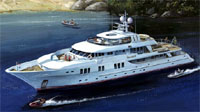
Inace Yachts 135' Long Range Mega Yacht
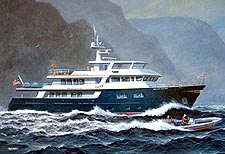
All Ocean 120' Overing Explorer
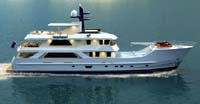
Inace Yachts 126' Explorer Yacht

Overing 100, Allegro 30 Explorer Yacht
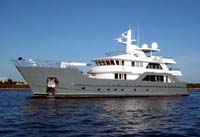
Inace Yachts 120' Explorer Yacht
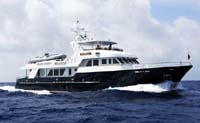
Overing 98 Explorer Yacht
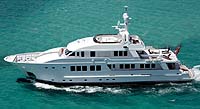
Inace Yachts 111' Long Range Motor Yacht

Overing 78, Allegro 24 Explorer Yacht
All ocean yachts 110 explorer yacht.
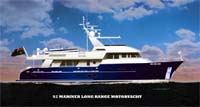
Overing Mariner 92 Explorer
All ocean yachts-bray expedition yacht.

Overing 86 Foot Explorer
All ocean yachts 100 fiberglass.
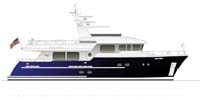
Mariner 75 Explorer

Find anything, super fast.
- Destinations
- Documentaries
Legend READ LISTING DISCLAIMER
LEGEND is the ultimate adventure vessel to fulfil the exploration charter of a lifetime. Capable of navigating the world's most remote territories, an unforgettable and wild charter experience awaits guests onboard luxury explorer yacht LEGEND.
Looking for the charter adventure of a lifetime? Look no further than state-of-the-art luxury explorer superyacht M/Y LEGEND. Refitted in 2015 to the highest in modern luxury standards, this 77.4m superyacht is equipped with Arctic capabilities to take guests off the beaten track and into the wildest corners of the world. From submersibles and snow mobiles to heli operations and jet skis, LEGEND boasts all of the toys and equipment to complete an out-of-this-world charter experience for an adrenaline-fuelled stay at sea.
This luxury explorer yacht's spectacular amenities are almost too many to list; counting among them a lavish 16-person jacuzzi, plush cinema room, Balinese spa and fully-equipped gym to ensure guests travel in utter and uninterrupted luxury. In contrast to her rugged explorer exterior, LEGEND's interiors can be characterised as comfortable and sophisticated. Accommodating an impressive 22 guests, LEGEND is perfect for friends, families and large groups as well as intimate gatherings. 28 dedicated and rigorously trained crew members are on hand to ensure every guests' want and need is tended to, with capacity to board up to 10 extra expedition staff if required.
LEGEND is a true go-anywhere superyacht. Just as comfortable in the icy lakes of the Arctic as she is in the South American Fjords or Northern Europe's Baltic Sea, nowhere is too wild or out of reach onboard M/Y LEGEND. Built with state-of-the-art explorer capabilities including an ice-breaking hull, fully certified helideck and fit-for-purpose toy collection, guests onboard LEGEND are guaranteed to get the most out of their luxury charter experience.
LEGEND is a fine epitome of the hybrid explorer yachting trend which is increasingly in demand in today's charter market. Her rugged exterior and vast storage ensures she is capable of long range autonomy at sea, for the more adventurous itineraries, while her inside 6-star luxury awaits to welcome guests in sharp contrast with their wild surroundings. Her exploration capabilities are limitless; with her outdoor heating, remarkable stability and an experienced and well-trained crew, LEGEND boasts a long range of up to 7,640 nautical miles. Navigating untamed landscapes by day and enjoying the very finest in superyachting amenities by night, LEGEND is truly the charter yacht of the future and extremely in demand on today's market.
Accommodation
LEGEND's luxurious 11-cabin arrangement is perfectly equipped to accommodate any variety of groups up to 22 guests. With each suite assigned its own particular character themed to a specific destination around the world, guests will want for nothing when it comes to luxury accommodation onboard LEGEND.
The master or Paris suite on its own dedicated deck is meticulously appointed with a king sie bed, his and hers ensuites both with a bath and show, walk-in wardrobe, study and its own lounge area. There are three more VIP suites on upper and main deck (Moscow, Paris and New York suite) all en suites and accentuated by rich mahogany and plush materials to give an inviting feel. LEGEND is family ready for child and carers with two convertible twin suite on the main deck, the Sydney and Rio de Janeiro suites, both with ensuite shower room. The Panama suite on the upper deck can also be converted to a double room, also with an en suite shower room.
From her Balinese style spa, choice of jacuzzis, fully equipped gym, 14-seater cinema to her piano and whiskey bars, LEGEND is designed to entertain guests of all ages. Her accommodation is designed to the finest standards and with the richest materials, so that guests are assured a stay in absolute luxury.
The particulars on this page are a general guide to give a broad description of the yacht. They are not intended to constitute part of an offer or contract. All prices, photographs, measurements, plans and specifications referred to are given as a guide only and should not be relied upon for the charter of this yacht. The copyright of all details,photographs and deckplans remains the property of their respectful owners.
I agree to the Terms and Conditions and Privacy Policy .
+44 207 193 4892
+1 954 376 3282
Charter Rates $ €
- West Mediterranean
- Baltic Sea Region
- Northern Europe


The global authority in superyachting
- NEWSLETTERS
- Yachts Home
- The Superyacht Directory
- Yacht Reports
- Brokerage News
- The largest yachts in the world
- The Register
- Yacht Advice
- Yacht Design
- 12m to 24m yachts
- Monaco Yacht Show
- Builder Directory
- Designer Directory
- Interior Design Directory
- Naval Architect Directory
- Yachts for sale home
- Motor yachts
- Sailing yachts
- Explorer yachts
- Classic yachts
- Sale Broker Directory
- Charter Home
- Yachts for Charter
- Charter Destinations
- Charter Broker Directory
- Destinations Home
- Mediterranean
- South Pacific
- Rest of the World
- Boat Life Home
- Owners' Experiences
- Conservation and Philanthropy
- Interiors Suppliers
- Owners' Club
- Captains' Club
- BOAT Showcase
- Boat Presents
- Events Home
- World Superyacht Awards
- Superyacht Design Festival
- Design and Innovation Awards
- Young Designer of the Year Award
- Artistry and Craft Awards
- Explorer Yachts Summit
- Ocean Talks
- The Ocean Awards
- BOAT Connect
- Between the bays
- Golf Invitational
- BOATPro Home
- Superyacht Insight
- Global Order Book
- Premium Content
- Product Features
- Testimonials
- Pricing Plan
- Tenders & Equipment

Icon Yachts announces interior designer for 70m Project Master at the Monaco Yacht Show
Related articles.
Dutch shipyard Icon Yachts has appointed British studio Winch Design as the interior designer for the 70-metre Project Master. The announcement was made at this year's Monaco Yacht Show .
The shipyard is in the process of converting the Kleven -built offshore rescue and support ship Ocean Ness into one of "the world's most capable explorer yachts", with delivery anticipated for this year. First announced at the 2021 Monaco Yacht Show, the red-hulled vessel arrived at Icon Yachts' drydock facility in Harlingen in 2022.
Since then, various parts of the vessel have been demolished and the old interiors have been ripped out to be replaced, leaving a blank canvas for the Winch Design team to work with. The conversion is the first of its kind to be undertaken by Icon since the delivery of 68.2-metre Ragnar in 2020.
The project has also been designed in collaboration with Espen Øino and will see Ocean Ness undergo a four-metre extension, bringing her total length to 70 metres while retaining 95 per cent of the ship's original platform and superstructure.
"Project Master is the ultimate exploration vessel, and we are delighted to be working with Icon Yachts to offer a platform for discovering uncharted territories," said Jim Dixon of Winch Design. "At the heart of the design is a constant connection with the surrounding seascape, and an ambience of social relaxation and adventurous episodes. Each layer of the interior tells a story, taking guests on a journey of discovery through the depths of the ocean."
The studio will also be utilising "eco-friendly" materials and suppliers.
Accommodation is for 12 guests across six en suite cabins including a 140-square-metre owner's suite. On the upper deck, guests will find the main saloon with floor-to-ceiling windows, with the remaining guest accommodation positioned on the main deck, comprising two VIP cabins and three twin cabins. Once complete, Project Master will sleep an additional 19 crew.
The project was sold to an experienced superyacht owner looking to travel further afield. "The owner was initially playing with the idea of a new build but after talking to us and seeing the benefits of a conversion project he was convinced," said Stephan Vitus, head of project development at Icon Yachts. "We spent a long time with the family trying to identify a vessel for the conversion and this is exactly what they were looking for in terms of the facilities and the platform."
The owners brief called for a "family-orientated" vessel capable of tackling extended voyages while remaining suitable for charter. Project Master's explorer credentials will include a large toy store, a 42-square-metre expedition area and two 11.5-metre cranes that can be altered to launch and recover submarines and other guest tenders. On the top deck lies a fully certified helicopter deck that can double as a space for entertaining, providing more than 200 square metres of additional outdoor space.
The owner also requested a Jacuzzi, spa, sauna and gym to be incorporated into the design.
Yacht management firm JMS Yachting is working alongside Icon on the project, having removed all the equipment from the wheelhouse to be recycled or reused. The team will also give Project Master all-new technology to ensure she is "ready for the next 20 years and significantly more comfortable".
Project Master will feature hybrid thrusters to allow for near-silent cruising at 10 knots. The configuration of the propulsion will also allow for the installation of a full diesel-electric system at a later stage, offering her owner future-proof possibilities. Once complete, Project Master will have a top speed of 14 knots and a range of more than 6,000 nautical miles.
For those attending the Monaco Yacht Show, visit Stand DS103 to say hello to the BOAT International team.
Sign up to BOAT Briefing email
Latest news, brokerage headlines and yacht exclusives, every weekday
By signing up for BOAT newsletters, you agree to our Terms of Use and our Privacy Policy .
More stories
Most popular, from our partners, sponsored listings.
672 Wine Club
- Motorcycles
- Car of the Month
- Destinations
- Men’s Fashion
- Watch Collector
- Art & Collectibles
- Vacation Homes
- Celebrity Homes
- New Construction
- Home Design
- Electronics
- Fine Dining
- Benchmark Wines
- Brian Fox Art
- Disneyland Resort
- Ka La’I Wakiki Beach
- Kalamazoo Grill
- Raffles Hotels & Resorts
- Tributary Idaho
- Sports & Leisure
- Health & Wellness
- Best of the Best
- The Ultimate Gift Guide
Baltic Yachts Just Unveiled Its First Catamaran, a Sleek 107-Foot Multihull
The vessel is expected to hit the seas in the summer of 2027., rachel cormack.
Digital Editor
Rachel Cormack's Most Recent Stories
- This 18th-Century Diamond Necklace Was Worn at Two British Coronations. Now It Could Fetch $2.8 Million.
Forget Diesel. The World’s Largest Sportfishing Yacht Will Run on Vegetable Oil.
This new 223-foot superyact has 4 decks, 3 pools, and one giant cinema.
- Share This Article

Baltic Yachts is finally diving into the catamaran segment.
Related Stories
- This Bonkers New 6×6 Land Rover Defender Is Built to Be a ‘World-Ender’
- Inside Rolls-Royce’s New N.Y.C. Studio for Designing Ultra-Luxury Dream Cars
- Heesen’s New 204-Foot Custom Superyacht Will Be One of Its Largest Yet
“She will be very much an explorer yacht with exceptionally high levels of comfort, beauty, and reliability, as well as some groundbreaking developments in efficiency,” Baltic sales director Kenneth Nyfelt said in a statement .

The vessel was built to a specific weight to ensure the best performance and handling. It will have notably low energy consumption at anchor and the ability to regenerate electricity under sail via propellers, according to Baltic. The yard didn’t share any details regarding speed or range, but the sail will add a few points to both. All sailing systems will be controlled from the crew areas on the flybridge.
The 107 delivers on the design front, too. The cat will showcase “a quality of finish that is yet to be seen on a multihull,” according to the yard. Penned by L.A.-based designer Jamie Bush , the modern interior pairs a classic palette of warm woods and crisp whites with pops of sporty colors. “It’s about creating a space that’s at once sophisticated, youthful and timeless for our adventurous clients,” Bush explained. Seafarers can also enjoy sweeping, 360-degree views from the salon and generous, whisper-quiet cabins.
The design and engineering phases of the project are almost complete, with construction scheduled to start later this month. The yacht is due for delivery in summer 2027.
Rachel Cormack is a digital editor at Robb Report. She cut her teeth writing for HuffPost, Concrete Playground, and several other online publications in Australia, before moving to New York at the…
Read More On:
- Baltic Yachts
- Sailing Yacht
More Marine

A Frothy Genoa International Boat Show Proves the Yachting World Is Alive and Kicking

The Rolex Swan Cup Is One of Sailing’s Most Illustrious Races. Here’s What It’s Like to Attend.

Meet the Wine Club That Thinks Differently.
Receive editor-curated reds from boutique California producers four times a year.
Give the Gift of Luxury
Latest Galleries in Marine

Monte-Carlo Superyacht in Photos

Livia Superyacht in Photos
More from our brands, exclusive: messika high jewelry gears up for runway show, looks ahead to madison avenue flagship, pac-12 sues mountain west over ‘poaching penalty’, international oscar race: ‘reinas,’ prizewinner at berlin and locarno, selected by switzerland, unesco warns against the looting and trafficking of artifacts from sudan, the best yoga mats for any practice, according to instructors.

COMMENTS
Damen's 345-foot SeaXplorer 105 is the largest model in the SeaXplorer range, with exterior design by Azure Yacht Design. The platform was developed under the guidance of expedition specialists ...
Expedition yachts have traditionally been converted freighters or supply vessels, like the 223-foot Ragnar or 250-foot Yersin. ... The sleek, clean lines are from Britain's H2 Yacht Design, with ...
First, we need to get something straight. While every expedition yacht is an explorer, not every explorer is capable of expeditions. EYOS Expeditions co-founder Rob McCallum is something of an expert here, being part of the team that designed and specced the SeaXplorer line of 55- to 105-metre yachts with Damen Yachting. "Explorer yachts are defined as vessels that have the range and ...
While all expedition yachts can be classed as explorers, not every explorer can come under the expedition yacht category. The term explorer yachts encapsulates more widely a range of motor yachts and sailing yachts, whereas an expedition vessel usually has more of a purpose behind it. This can appeal to both charter guests and yacht owners ...
A fuel-efficient hull is essential when it comes to ensuring an expedition yacht has the range to cross oceans. Cheoy Lee Yachts Explorer Series yachts feature a bulbous bow, which reduces the hull's resistance to the water. " When Overing Yacht Design developed their first 50-meter fast-displacement hull in the late 1990s, Overing brought ...
By YATCO Posted on July 23, 2024 Boat Types, FAQ, Motor Yacht. Embark on a journey like no other with our comprehensive 2024 Ultimate Explorer Yacht Guide. Designed for those with a thirst for adventure and a passion for luxury, explorer vessels - also known as expedition yachts - are the epitome of strength, range, and comfort.
One of the most memorable launches of 2021, the 139.7 metre super explorer yacht Solaris travelled to the top of this coveted list of expedition yachts when she hit the water last year. The highly secretive project is built by Lloyd Werft, which also delivered the 115m explorer Luna in 2010, the fourth largest explorer yacht in the world. Spread across an impressive eight decks, Solaris was ...
Jul 18, 2019. Launched in 1996 as Turmoil, the 151-foot Palmer Johnson now known as Pioneer, a Vripack design, became the first yacht to navigate the Northwest Passage—not only with brawn, but also with rugged good looks. The Dutch take a pragmatic approach to life, probably because of their centuries-old battle to prevent the sea from ...
Creating a custom explorer or if you prefer the term, expedition yacht, for operation in high latitudes is a complex process. With one hand we must fully satisfy the client's goals for the vessel whilst with the other use naval architecture to deliver the right results in terms of intact and damage stability, performance, sailplan and/or powering, fuel capacity, electrical power requirements ...
Part of the renowned SeaXplorer series, La Datcha was delivered in 2020 and ushered in a new era in expedition yachting. As design partners with , EYOS was instrumental in developing La Datcha and the rest of the from the first lines drawn on paper. EYOS contributed over 150 design criteria based on its combined decades of expedition experience ...
Today, that series includes four bluewater expedition yachts designed for long-range voyaging without compromise: the 107 Explorer, 126 Explorer, 130 Explorer and 132 Aft House Explorer. In this Q&A, we asked Jon Overing to talk about the design process of creating a world-class long-range expedition yacht: the CHEOY LEE EXPLORER.
130Explorer. Robust and seaworthiness at its core, the 130 Explorer will allow you to live unforgettable adventures. Discover the corners of the globe on a Cheoy Lee Explorer, a series of expedition yachts that remove the boundaries from your cruising destinations. The world is yours to explore.
Trawler-type yachts are a special case of expedition yachts. The design of recreational trawlers resembles that of commercial trawlers used for ocean fishing. Just like their commercial ancestors, trawler yachts have full displacement steel hulls and raised pilothouses with reverse raked glass. The raked-forward windshield is not only about ...
We burned 23 gallons per hour at a smooth 18 knots. The salon and helm of the prototype 47. Dori Arrington. With 1,000 gallons of fuel, the Archipelago 47 has a reported range of 2,400 nautical miles at 8 knots, 1,400 nm at 10 knots, or 700 nm at 18 knots. It's also rated CE Class A for extended ocean voyages.
Stormbreaker from Theodoros Fotiadis. Theodoros Fotiadis Design. Some may say the glut of new expedition yacht concepts that are flying out of the world's best yacht design firms on a regular ...
Working with DAMEN's design team, EYOS advised on details from the hull form and bridge layout to the tender davits and Zodiac boarding arrangements. SeaXplorer was the first yacht built to meet the new Polar Code Standards, which came into force in 2017. While her entire hull is ice-strengthened, in the most challenging ice conditions ...
An Aluminum Expedition Catamaran. With 110′ LOA, a 35′ beam, and 45′ (33.5m, 10.6m, and 13.7m) of bridge clearance, the H-2 catamaran seeks to make a case for U.S. custom boatbuilding. Hauling toys beyond the horizon is the raison d'être for a rugged go-anywhere catamaran designed and built in the U.S., a notable exception in the world ...
All Ocean Yachts and Overing Yacht Designs introduce the Mariner 75 Explorer for your inspection. Please Contact Us for information on other yachts from 80' to 400'. Expedition trawler yacht designs and new construction 80 feet and larger. See designs and renderings of new adventure and explorer boats.
Yacht designs tend to be all about the exterior, while the interior can feel like something of an afterthought. However, upcoming expedition yacht Thor Explore turns this idea on its head completely.
Refitted in 2015 to the highest in modern luxury standards, this 77.4m superyacht is equipped with Arctic capabilities to take guests off the beaten track and into the wildest corners of the world. From submersibles and snow mobiles to heli operations and jet skis, LEGEND boasts all of the toys and equipment to complete an out-of-this-world ...
Name of Yacht: Length: Builder: Exterior design: Interior design: Exodus 25.60m Timmerman Yachts, Moscow Shipyard Guido de Groot Guido de Groot. BACK TO SELECTED PROJECTS. HOME / RECENT PROJECTS / SELECTED PROJECTS / ABOUT US / DESIGN STAGES /
Dutch shipyard Icon Yachts has appointed British studio Winch Design as the interior designer for the 70-metre Project Master. The announcement was made at this year's Monaco Yacht Show.. The shipyard is in the process of converting the Kleven-built offshore rescue and support ship Ocean Ness into one of "the world's most capable explorer yachts", with delivery anticipated for this year.
Baltic Yachts unveiled its first catamaran on Monday. Christened the Baltic 107 Catamaran, the 107-foot multihull is due for delivery in summer 2027.
The Value of the SuperYacht Amaryllis. Reflecting the intricate design, luxury amenities, and superior performance, the Amaryllis yacht is valued at approximately $120 million. The annual running costs are estimated around $12 million. However, the price of a yacht can significantly vary based on numerous factors, including size, age, luxury ...
Seven selections of paintings by Russian artists for any yacht interior. Megayachts are increasingly becoming the repositories of their owner's art collections. Art historians are sounding the alarm: owners do not know how to place a work of art, and the crew do not know how to properly care for it.On the Mediterranean and the U.S. East Coast - in the Mecca of yachting - some of the ...